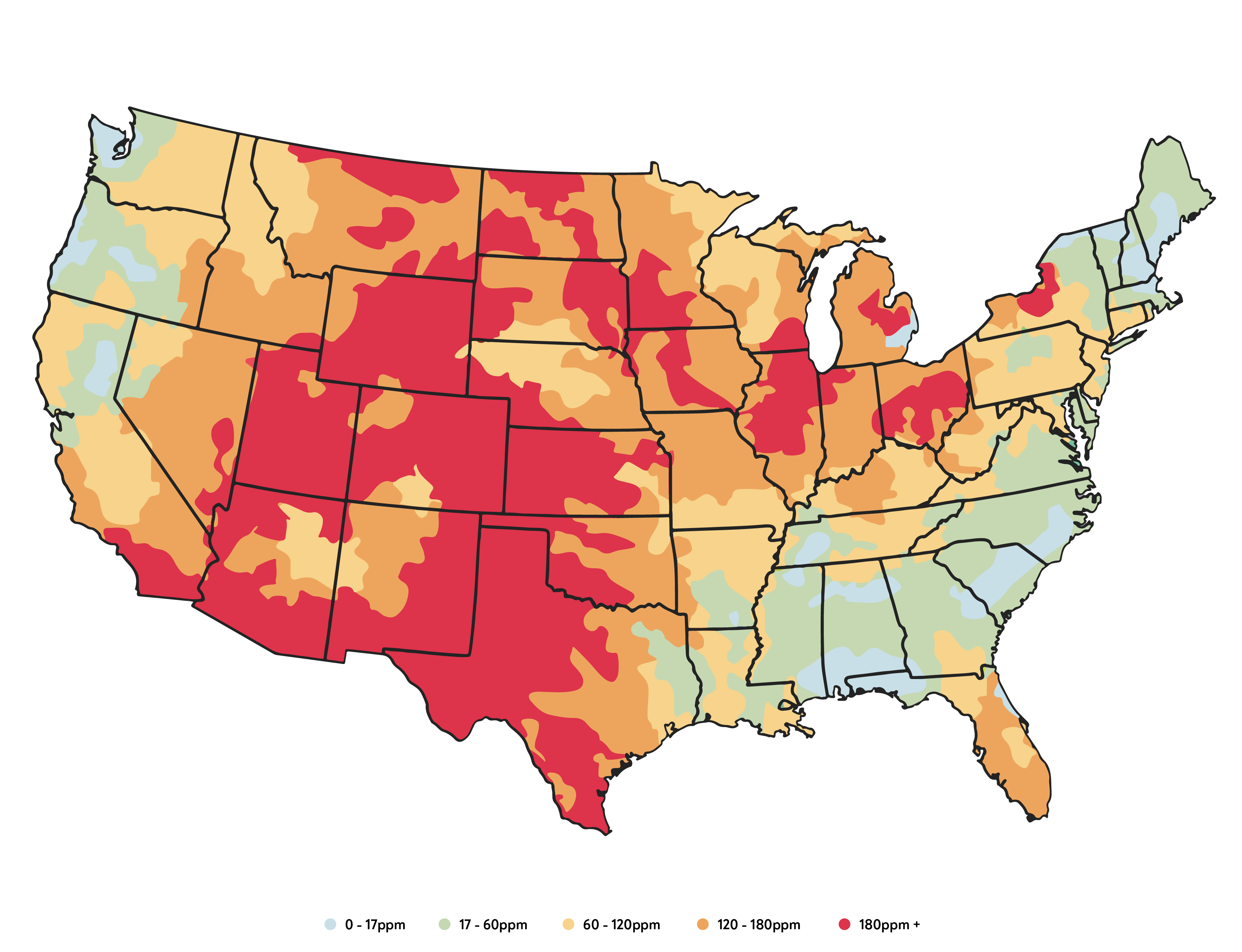Pros and Cons
People who operate commercial coffee equipment in regions with water that is optimally balanced for coffee have a financial advantage over those who live in regions where the water is very hard or soft. In those regions, untreated water is likely to cause significant corrosion or scale.

This map of the US gives you an idea of the variability of water hardness by region.
Water treatment systems vary significantly in cost. In general, the choice comes down to whether you are going to use a reverse-osmosis (RO) system or an ion-exchange unit. In the following pros and cons chart, we outline some considerations to help you make the most cost-effective choice. This chart assumes that all cafes will use some prefiltration to remove sediment and unwanted chemicals such as chlorine.
| System | Issue | Pros | Cons | BH recommendation |
| RO | Cost | Significant upfront cost | ||
| RO systems tend to have a long life expectancy. We have operated systems for over 5 years without needing to change any parts except the carbon filters, which are comparatively cheap. (A replacement carbon block filter costs as little as US$20.) | RO systems use one or two diaphragm pumps. The pump heads can be prone to developing limescale and will need replacement seals periodically. | RO systems should be serviced annually, with carbon filters replaced at least every six months to avoid bacterial grown. | ||
| Production capacity | Smaller (cheaper) systems will often not manage to produce sufficient product water for a busy cafe. | Be aware of the production capacity of your system. If you produce less than 1 litre of blended water per minute, you will struggle to keep up with demand in a cafe. | ||
| Wastage | In very small systems the ratio of waste water to product water can be as high as 10:1. |